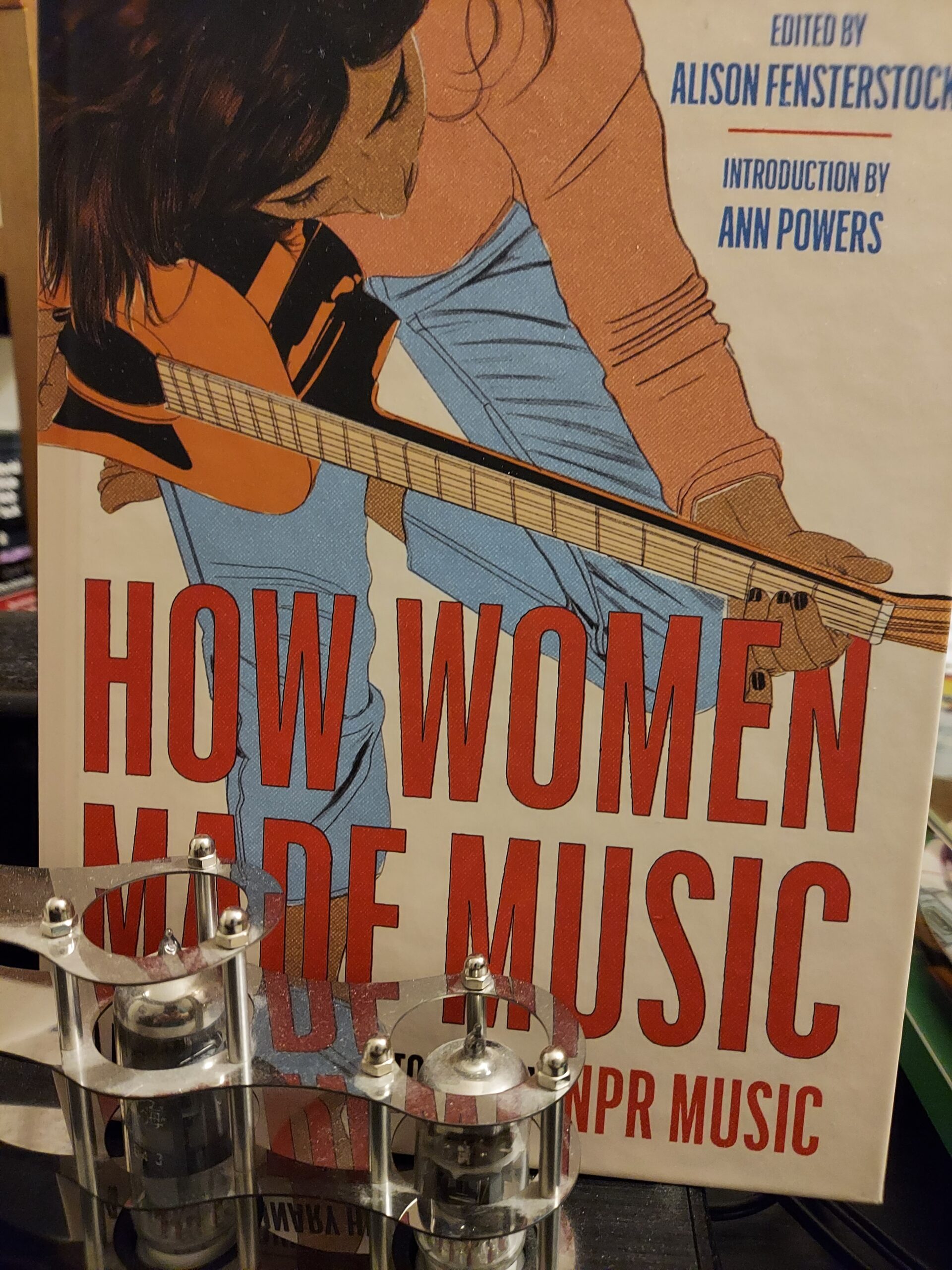In 2015 the Ink N Iron Festival in Nashville was, on paper, an utter failure. No-show Headliners, abysmal attendance, and sweltering heat all plagued what had promised to be a showcase of alternative culture centered around rusty vintage vehicles and bold tattoos. However, in my eyes, it was my most memorable concert experience. What introvert could argue with no lines, clean portalets, and front row seats with general admission prices? The performances were legendary. Wanda Jackson, at a few years shy of 80, hollered with a Jack White-picked back-up band to an audience of burlesque dancers and other headliners. And in between her rockabilly hits she dished out juicy stories of her tours with Elvis. Although the true highlight was Sharon Jones & The Dap-Kings in the year before her death to pancreatic cancer, kicking off her shoes and dancing as though she was twenty years young.
What does this memory have to do with a book review? How Women Made Music edited by Alison Fensterstock is a collection of such memories, with interviews and opinion pieces curated from Turning the Tables series on NPR. The series was developed to even the balance of articles written by and about men. If you look at the top 50 of Rolling Stones’ top 500 albums only a measly 18% are by bands or acts with at least 2 members who are women. That is not even a quarter of the albums. Turning the Tables are making their own lists, writing their own articles, doing their own interviews. Underappreciated no more.
Even though Turning the Tables is no longer active, they cemented their legacy with a book, a highlight reel of what their several years of work created. Included in the appendices are their ranked lists of albums and artists, inviting the reader to do their own aural research. The lists also help bridge the gap between what made it into the book and the amazing talent that just missed the cut. How Women Made Music is divided into arbitrary categories, grouping artists based on their stage presence and influence rather than telling a history of modern music through a feminine gaze. Chapter headings aside, the categories take a backseat for an opportunity to showcase the intersectionality of artistry. While American Pop Music has the largest representation, How Women Made Music makes an effort to display a spectrum: of genres, gender expression, of culture. In transitioning Turning the Tables to a book, what I feel is the weakest aspect of How Women Made Music is how much was omitted. To dedicate enough ink to each selection meant a smaller number of artists included in the main text. There are genres that have deeply rooted patriarchal stereotypes like metal and mariachi that could have more pages dedicated to the feminine iconoclasts. In addition, I felt the book did not venture far outside the United States. In choosing NPR as source material, they could have focused on US-based charts to make their selections, and then partner later with other publications to broaden their scope, but they decided to dabble somewhat with artists of other regions. But I digress, I am delighted in who they decided to include. And the writing is edifying journalism paired with insightful interviews.
When writing about women, especially in an industry dominated by men, there are common tropes that journalists cling to. This book is no exception. With many of the articles and interviews, there is a highlight of the reaction to the competitiveness of an industry dominated by men. The women are showcased as first, as role models for others, as leaders and mentors. All of these fail the “Finkbeiner Test,” an unofficial metric of measuring how stagnant journalists are at writing about women. In the basic nature of Turning the Tables, yes, the articles are going to fail the test on the basis that they seek out to write about women who influenced music. However, by curating a massive collection of writings, NPR has provided an opportunity for future music journalists to move beyond the over-trodden path. Turning the Tables has written about the oft-forgotten, the behind-the-scenes muses, the iconoclasts and the pioneers. Those women who needed to be interviewed and written about in order to document their influence now have ink dedicated to them. Now we can move on to writing and interviewing without the tired cliches. Write about artists being influential because of their accomplishments, let them claim their superlatives without asterix. Shake up the homogenized top lists that lack the depth to truly represent the best. How Women Made Music is a stepping stone in that direction, a resource to give you the knowledge to do better.
